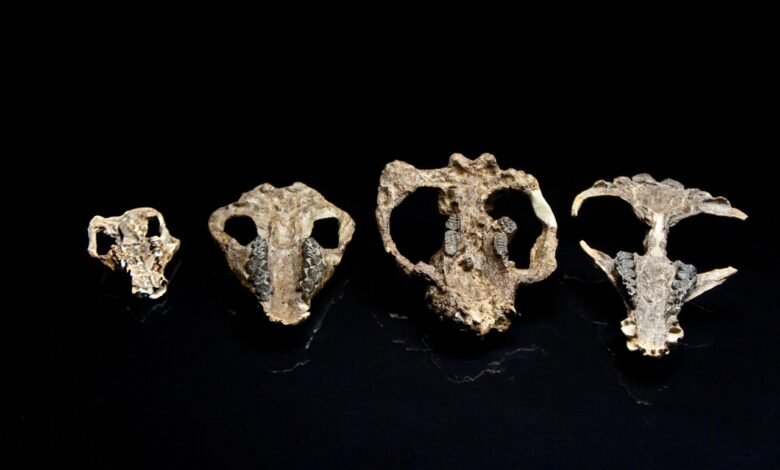Scientists discover new mammal species in Colorado, provide clues about diversity

DENVER (KDVR) – Researchers at the Denver Museum of Nature and Science have discovered a new species of mammal from 65 million years ago.
A fossil skull and jaws of the newly discovered species were discovered near Corral Bluffs, outside Colorado Springs, according to the museum. The rocks where the fossil was found date back to a few thousand years after the extinction of the dinosaurs.
“Rocks from this time interval have a notoriously poor fossil record, and the discovery and description of a fossil mammal skull is an important step in documenting the first diversification of mammals after Earth’s last mass extinction,” said Dr. Tyler Lyson, museum curator. of Vertebrate Paleontology in a statement.
The discovery took several years to make. Tyler Lyson joined the museum in 2014 as Curator of Vertebrate Paleontology. He wanted to answer questions about what happened during the first million years after the mass extinction of the dinosaurs.
Lyson and his team analyzed the geology of places like Bolivia and Argentina, but decided to check out Colorado first.
“And interestingly enough, we ended up making the big discovery right here in Colorado, within the city limits of Colorado Springs,” Lyson said. “It’s crazy because you never think these big discoveries are going to happen in your own backyard.”
The museum said the site has a “unique preservation of diverse species,” including plants and animals. In 2016, after months of excavating and breaking large rocks, Lyson opened up a rock to reveal the complete skull of a mammal that roamed the Earth shortly after the extinction of the dinosaurs, Carsioptychus.
After this discovery, the team continued to find more mammal skulls belonging to different species, leading to a grant for additional research from the National Science Foundation’s Frontier Research in Earth Sciences program, which is the largest grant the museum has ever received.
The 5-year project began last summer and researchers published a study including the newly discovered species in April.
The new species was named Militocodon lydae in honor of two of the volunteers who helped with the research project, Sharon Milito and Lyda Hill.
The museum said the animal was about the size of a chinchilla and was part of a group of animals that led to the emergence of modern hoofed mammals such as deer, cows and pigs.

Due to the poor fossil record at the time, scientists don’t know much about how and when life recovered after the mass extinction. Thanks to the discovery and continued research from the grant, the museum said scientists “are now able to paint a vivid picture of how and when life recovered after Earth’s darkest hour.”
Lyson said the discovery of new species provides important clues about how mammals diversified over time after Earth’s last mass extinction.




